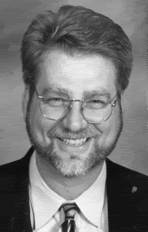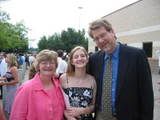what we say and what the world hears
So I was exercising at the ymca, trying to keep the holiday food onslaught from doing more damage than is good (I am addicted to peanut brittle); I was running on the eliptical machine and listening to Christmas music on the ipod, when, on the television screen a few feet away, Franklin Graham appeared. Franklin smiled. The anchor smiled.
I could not hear the sound, but here is the insight: I did not need to hear the sound.
The anchor proceeded with the interview, and the piece could be broken down into three phases.
First, Franklin was holding an Operation Christmas Child box, and talking about it. The anchor's face signified warmth and interest. Franklin talked about the boxes, and about how girls receive a certain kind of box and boys a different kind of box. It has to do with a ribbon or something. I can't remember the specifics.
End of phase one.
In the second phase of the interview, there was a picture of the aging couple, Billy and Ruth Graham, parents of Franklin. Billy Graham is the legendary evangelist, and the Grahams live in Montreat, which is a mecca for Southern Presbyterians and is located in the western part of our state, just east of Asheville. I attended square dances there in the summers when I was a college student, working in a nearby camp. The question was regarding a controversy, reported first in the Washington Post and then in the Charlotte Observer, over where the Grahams are to be buried. Ruth wants to be buried in the mountains, at a retreat center named "The Cove", near home. Franklin wants his father to be buried in Charlotte, in a library/memorial that is being constructed.
The reporter's face became tense; the warmth and compassion were no longer evident. No resolution emerged from this part of the conversation.
In the third phase, a picture of Ted Haggard, the gay megachurch pastor in Colorado who had been instrumental in conservative movements restricting gay marriage through political elections, flashed onto the screen. The questions were about how Franklin Graham felt about this issue, and about the prevalence of this practice among evangelicals---another large church evangelical had gone public a few days early.
So, here is the media template. The media is mildly interested in the good works of Christians. The media is somewhat more interested in conflict and division among Christians, especially prominent Christians. The media is very interested in hypocrisy among Christian leaders. The media's interest is "off the charts" about the interface of sexuality, televangelism, and the megachurch.
Sadly, Franklin thought he was proclaiming the gospel. The last two phases conveyed the most prominent meaning in this particular public appearance. Those who are already believers, of course, would see it differently, but then, that is not an evangelist's primary audience. In sum, Franklin lost more than he gained in his appearance on the morning television news cycle. The news folks got exactly what they wanted.
Here ends the lesson on the difference between what we say and what the world actually hears.
I could not hear the sound, but here is the insight: I did not need to hear the sound.
The anchor proceeded with the interview, and the piece could be broken down into three phases.
First, Franklin was holding an Operation Christmas Child box, and talking about it. The anchor's face signified warmth and interest. Franklin talked about the boxes, and about how girls receive a certain kind of box and boys a different kind of box. It has to do with a ribbon or something. I can't remember the specifics.
End of phase one.
In the second phase of the interview, there was a picture of the aging couple, Billy and Ruth Graham, parents of Franklin. Billy Graham is the legendary evangelist, and the Grahams live in Montreat, which is a mecca for Southern Presbyterians and is located in the western part of our state, just east of Asheville. I attended square dances there in the summers when I was a college student, working in a nearby camp. The question was regarding a controversy, reported first in the Washington Post and then in the Charlotte Observer, over where the Grahams are to be buried. Ruth wants to be buried in the mountains, at a retreat center named "The Cove", near home. Franklin wants his father to be buried in Charlotte, in a library/memorial that is being constructed.
The reporter's face became tense; the warmth and compassion were no longer evident. No resolution emerged from this part of the conversation.
In the third phase, a picture of Ted Haggard, the gay megachurch pastor in Colorado who had been instrumental in conservative movements restricting gay marriage through political elections, flashed onto the screen. The questions were about how Franklin Graham felt about this issue, and about the prevalence of this practice among evangelicals---another large church evangelical had gone public a few days early.
So, here is the media template. The media is mildly interested in the good works of Christians. The media is somewhat more interested in conflict and division among Christians, especially prominent Christians. The media is very interested in hypocrisy among Christian leaders. The media's interest is "off the charts" about the interface of sexuality, televangelism, and the megachurch.
Sadly, Franklin thought he was proclaiming the gospel. The last two phases conveyed the most prominent meaning in this particular public appearance. Those who are already believers, of course, would see it differently, but then, that is not an evangelist's primary audience. In sum, Franklin lost more than he gained in his appearance on the morning television news cycle. The news folks got exactly what they wanted.
Here ends the lesson on the difference between what we say and what the world actually hears.




 Carter's Roost
Carter's Roost




0 Comments:
Post a Comment
<< Home